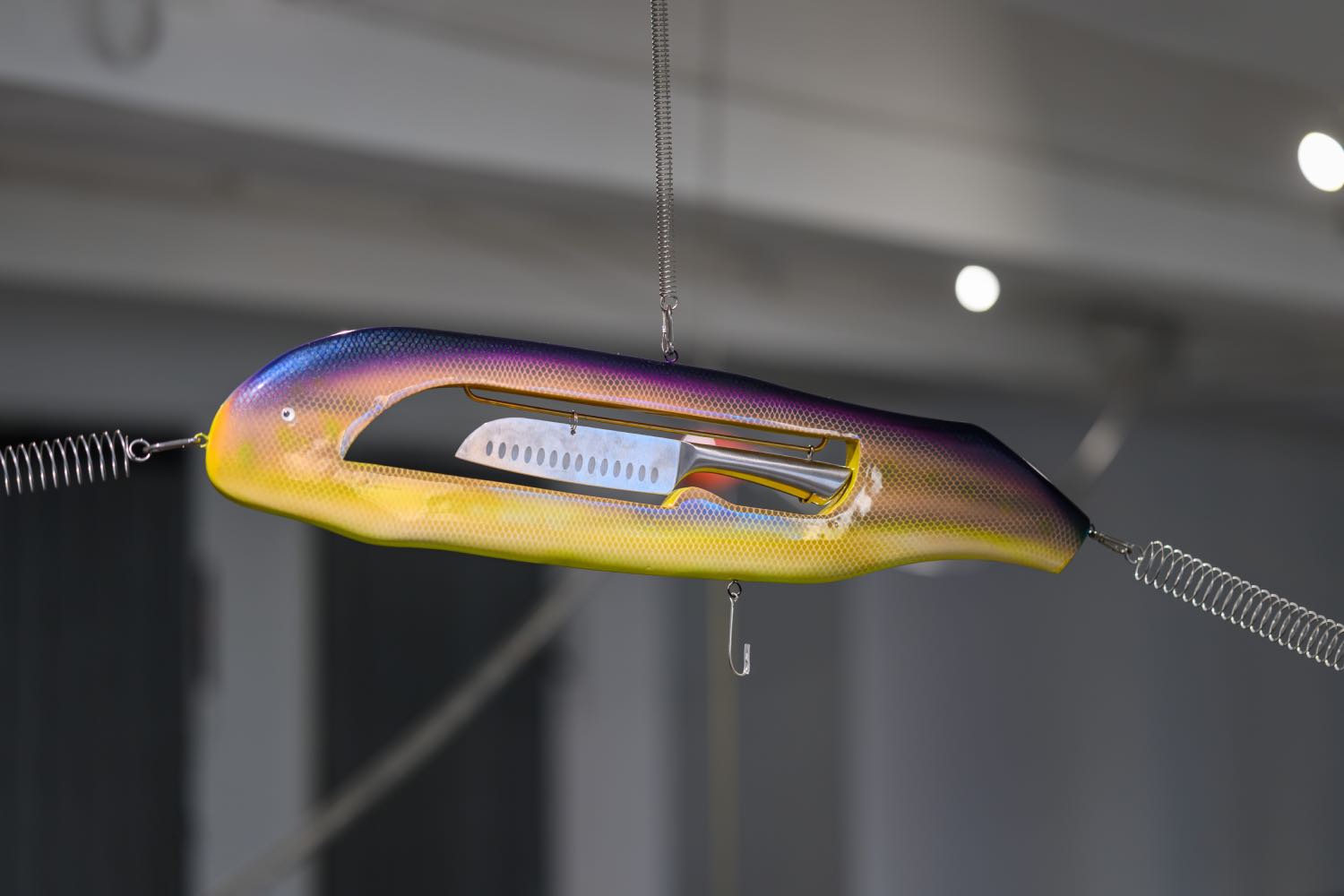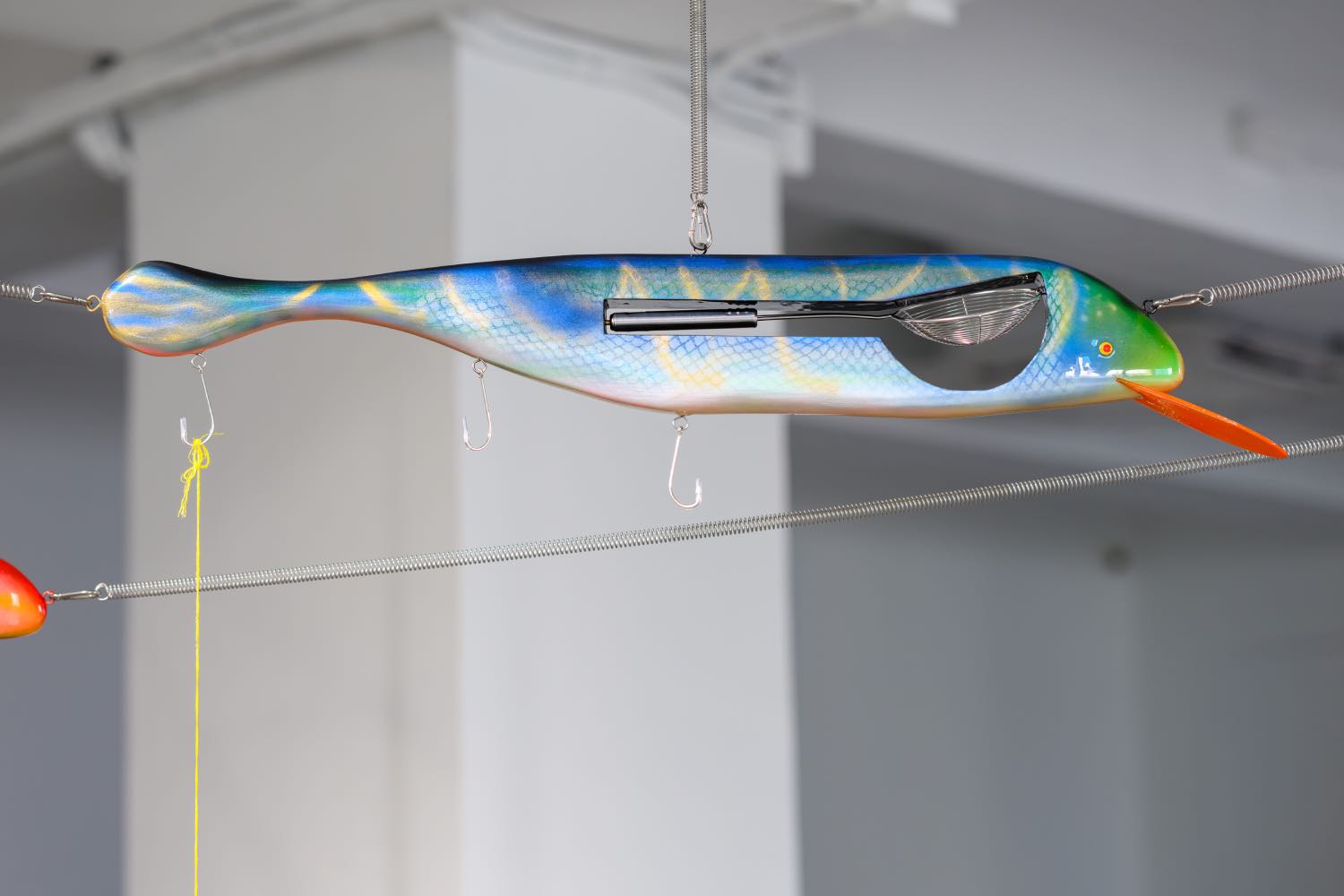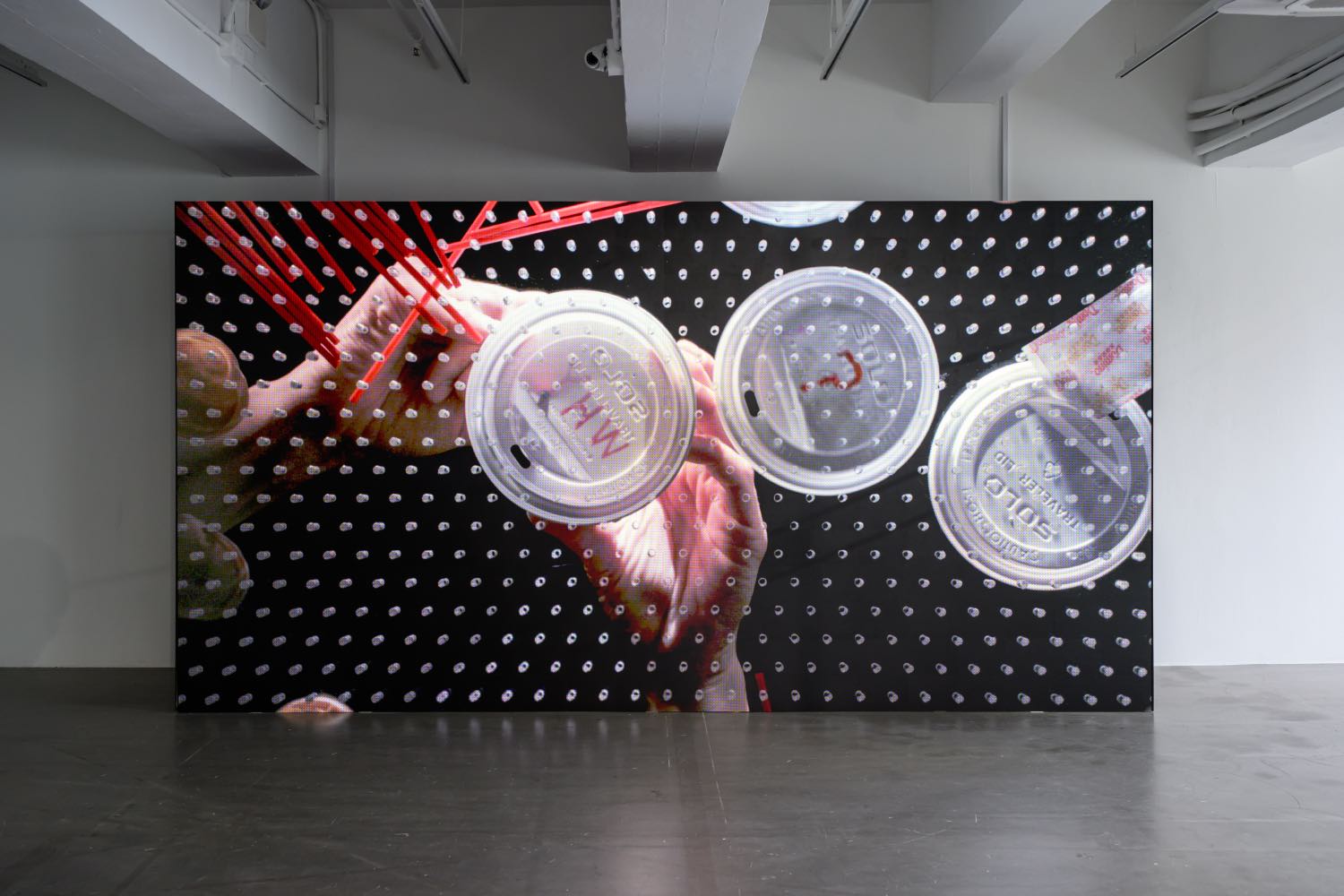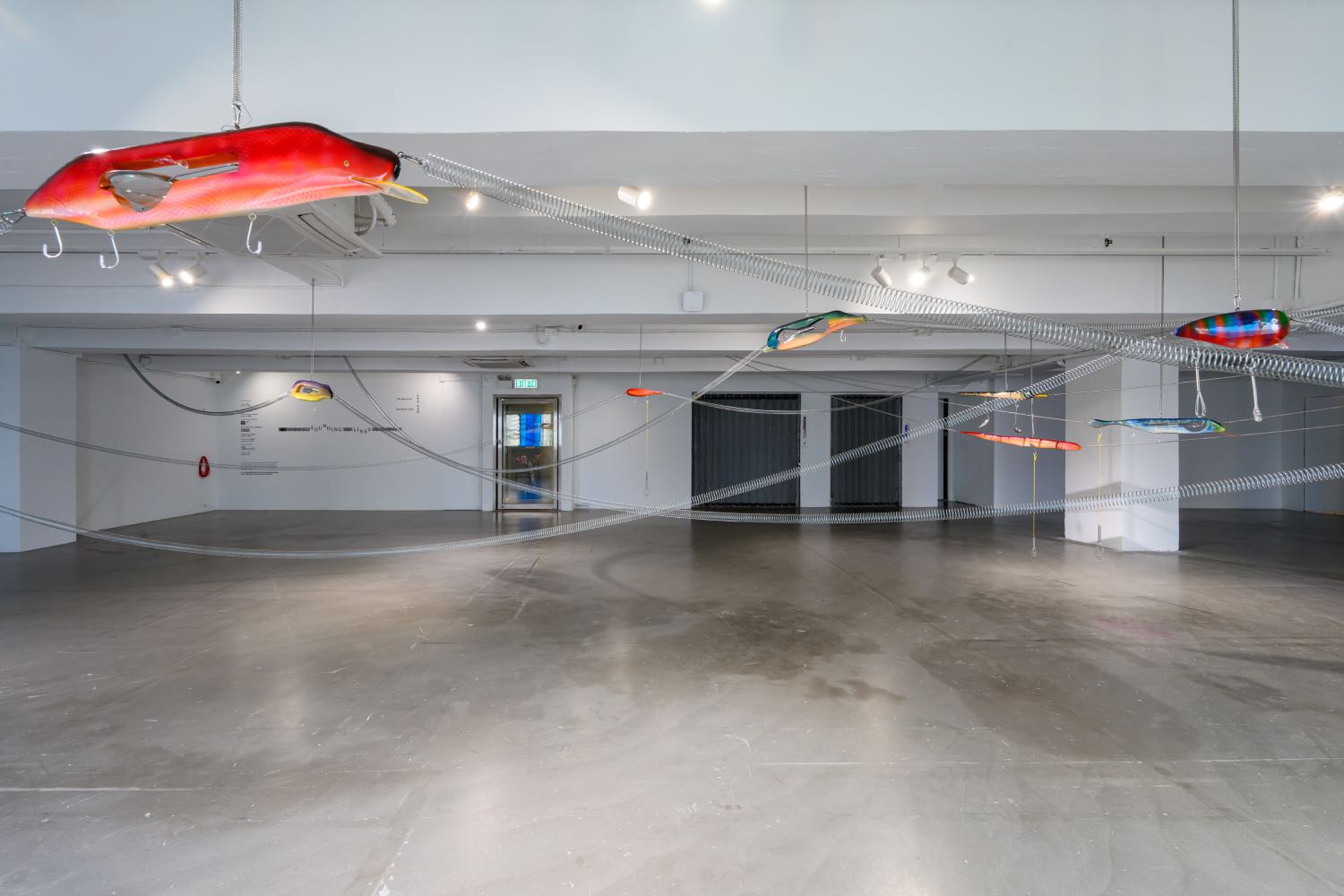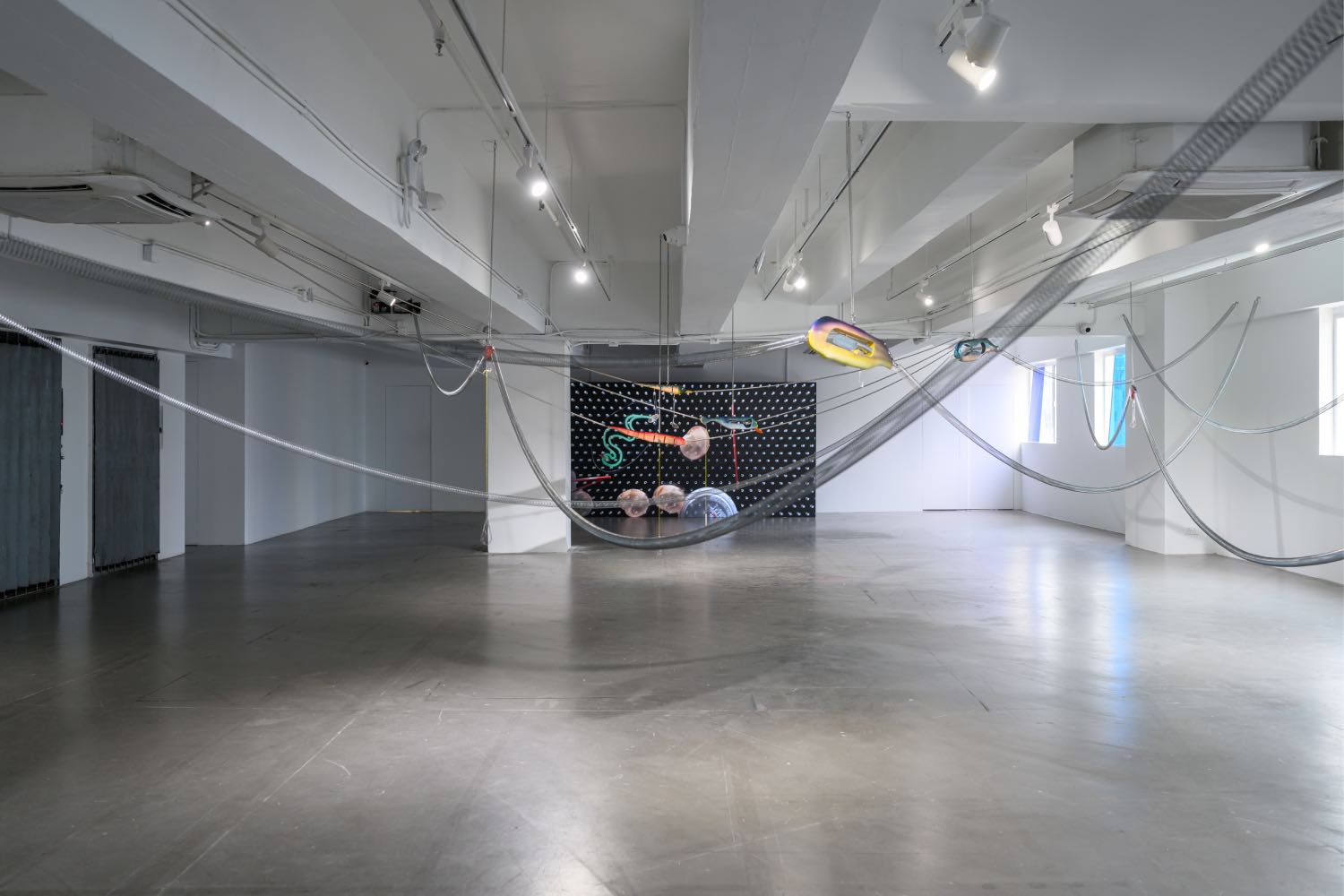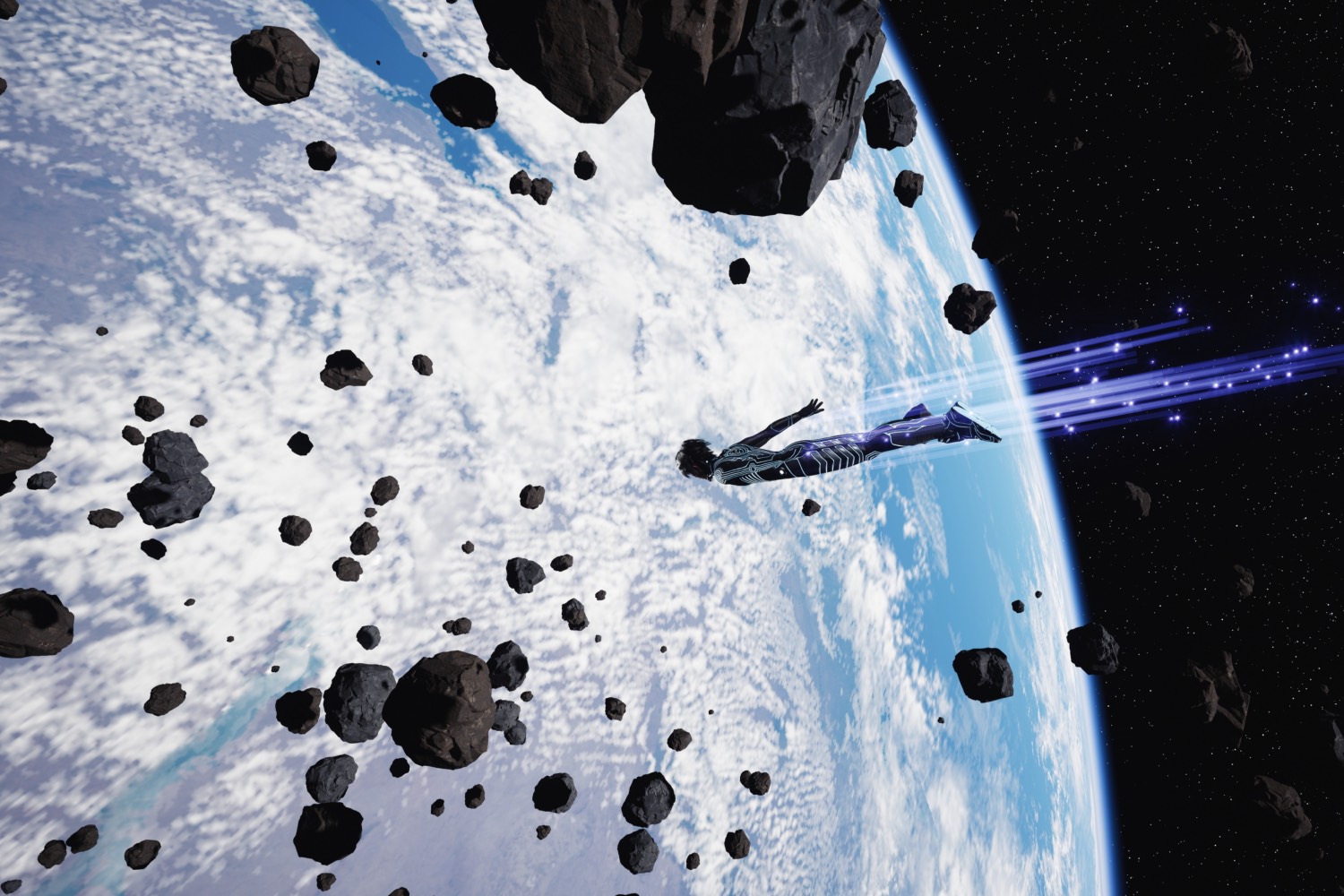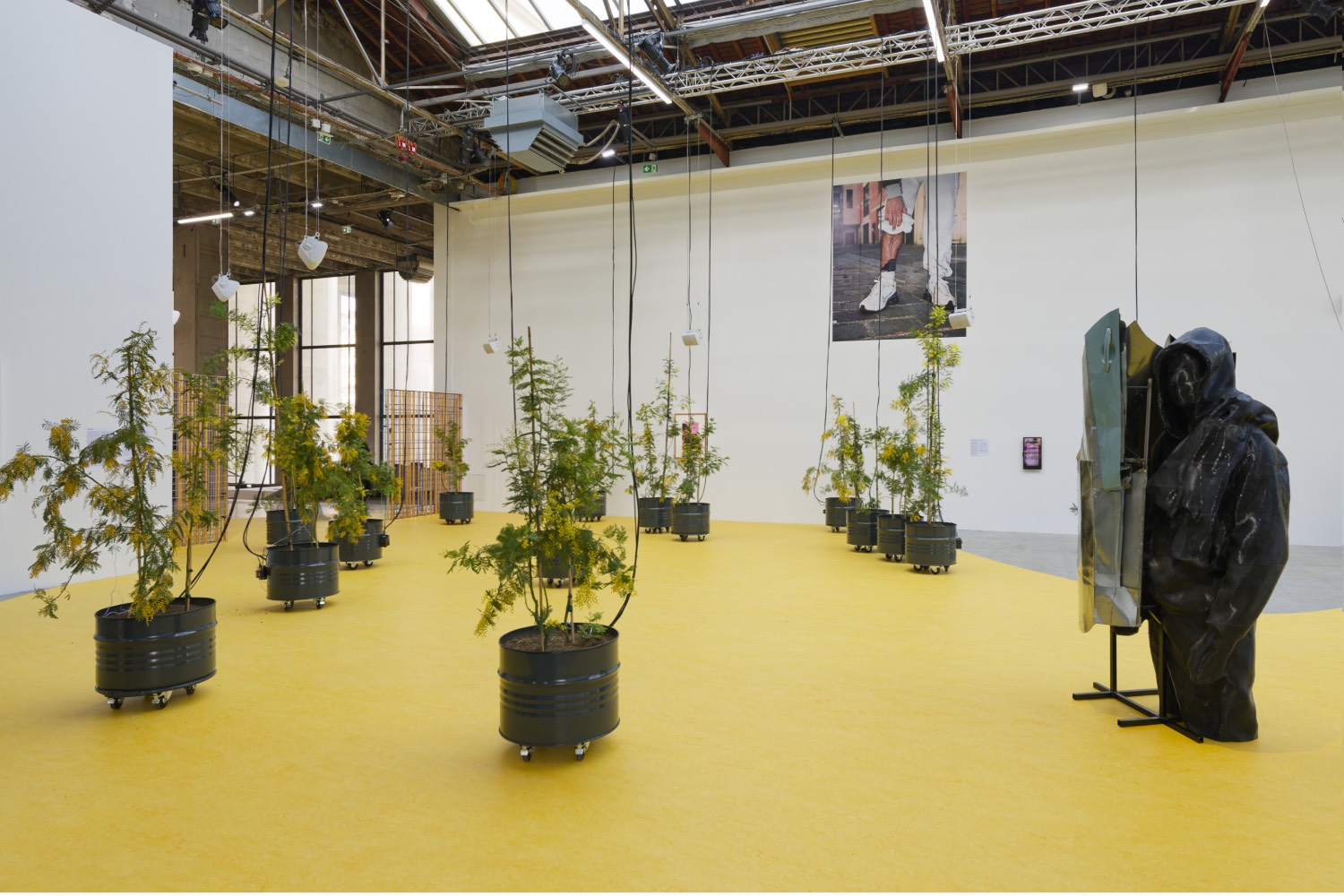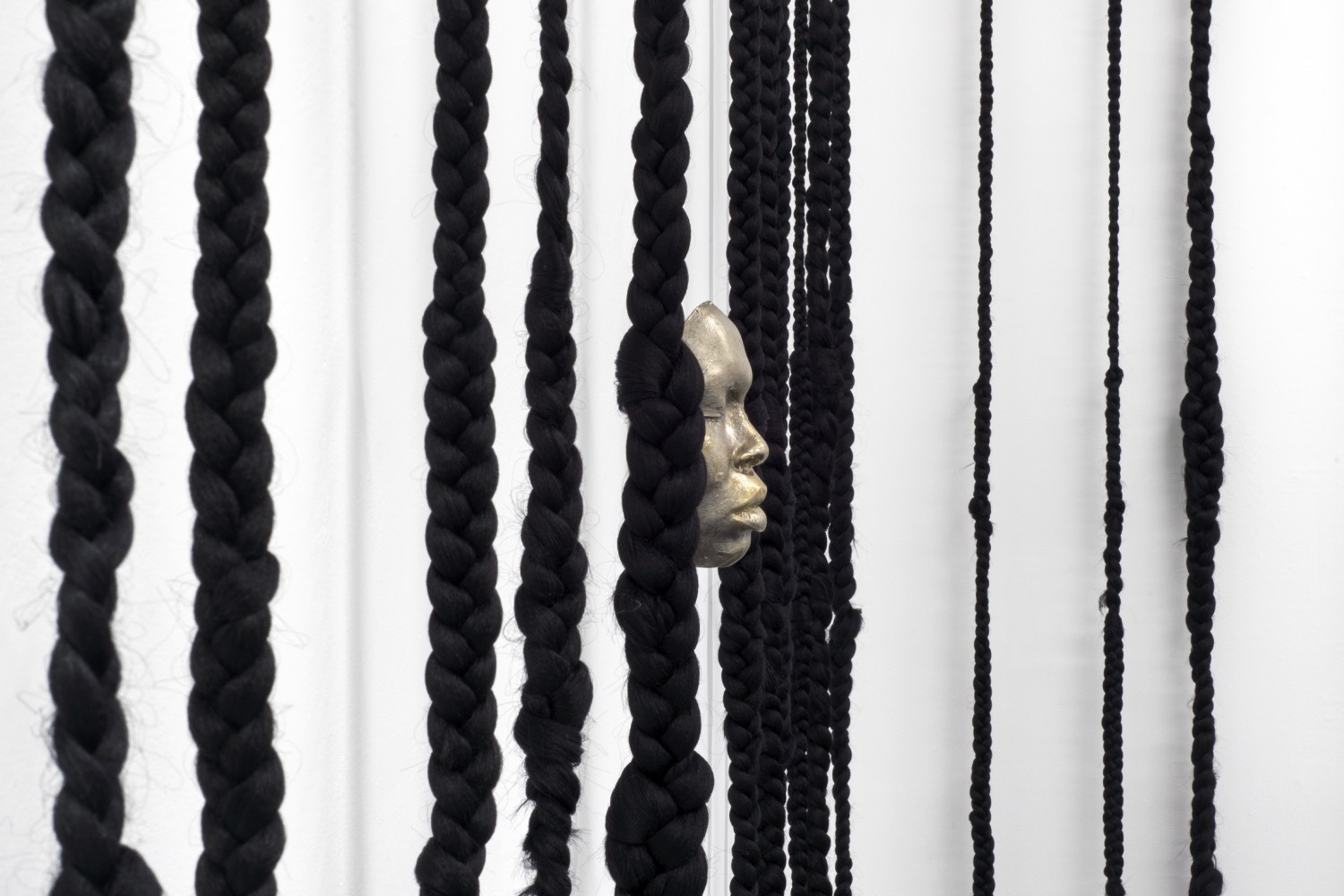To enter Aki Sasamoto’s exhibition “Sounding Lines” at Para Site, you need a half-minute journey to the 22nd floor. You take a small pre-internet elevator that preserves all the surface scratches from its industrial past, like a cave painting of machine oil. Its visual complexity reminds you of all sorts of Hong Kong movies from the ’90s. Your elevator ride shows you everything you can think of. This unscripted but choreographed tincture of narrative softly blankets you for your destination. You’re very well prepared to see Sasamoto’s exhibition. It’s perfect because you come with a shaped experience in Hong Kong, a standing point in this world. Sasamoto’s new work explores the relations among people and how we are distanced from or intimate with the world; it begins with how you previously were.
Carried by mercury daylight, Hong Kong seeps through the gallery’s semi-opened blue windows that Sasamoto draws her narratives on. The blueness catches your attention first because you’re just being naturalized in the sense of a body of water. Blue, water. Why not a blue sky? Because the illuminating color is in front of a full view of everlasting vertical apartments. Hong Kong is underwater, according to Sasamoto. You start to notice there are fish suspended in your body of water. You feel they are real fish, but you’re not sure, so you start walking toward one.
The little eyes on the fish give a primal impression of life, a cute life that we humans would like to dedicate our love to and identify ourselves with. The “cutification” pheromone is activated, but your iris starts a sudden shimmer. You begin to accept that you’re looking at fish-like objects, gently made aero/aqua-dynamic wooden shapes that have smooth, colorful shines and handmade details. Some of them have ready-made kitchen wares embedded in their carved-out “bellies.” You try to find something out while still looking at them with a little bit of love. Until you reach a point that it’s not about any of these but something else. There’s a descending rhythm coming from your progressive actions of looking. This is also how bait works. Yes, the fish are “lures,” friendly lures with multiple purposes. But your instinct must tell you that you are not identical to what you see while you’re high on kaleidoscopic silence. What kind of distance you keep is up to you, but you should zoom out.
So, for the first time, you realize that there are metal springs connecting your enchanted objects. You wonder why you didn’t notice them before, or maybe you did, but your micro-gazing made you forget. Then you realize something again: you’re in an exhibition space. You are looking at Sasamoto’s work. You stop moving closer. You stop moving at all. You constrain your innocent curiosity for the objects in the same space that other people’s innocent curiosities are also dependent on. You start looking around. Are there other humans like you? They are humans first, then visitors. Or they are visitors first, then humans. You start looking for eyes. A millisecond equals ten minutes. You’ve been frozen in front of your “lure” that you were giving all you had to gently and carefully walk toward a second ago. You just found a pair of eyes. They are precisely identical to yours. They are temporarily frozen in front of a “lure,” another “lure,” not yours, but next to yours.
From what you know, you flew seventeen hours to arrive in this city, the source city of cyberpunk, the source jungle of its own kind. Your own biosensors are highly but temporarily abnormal. Your neurons are blue. Your eye gaze is jet-lagged but soft and cute. You’re feeling what Sasamoto might feel about distance relations and people. Suddenly, a motor triggers itself from a corner, oscillating the metal springs, making an ionized crispy sound. Once again, you question why you didn’t see that before. But you get it, you start to have feelings, not decoding anything anymore. You start to think about people in this world, yourself, people you know and don’t know. And everything about all of you.

